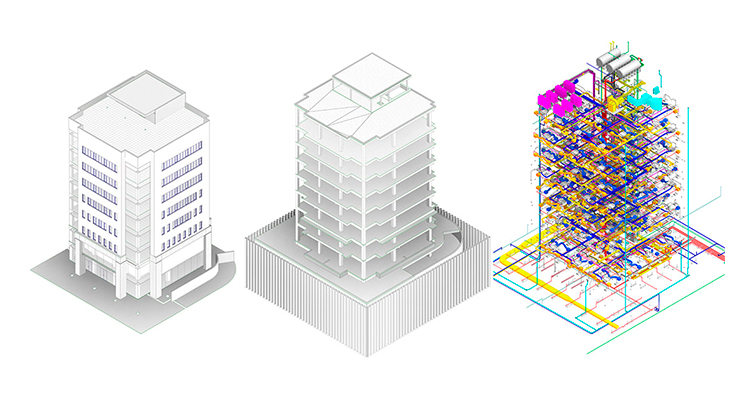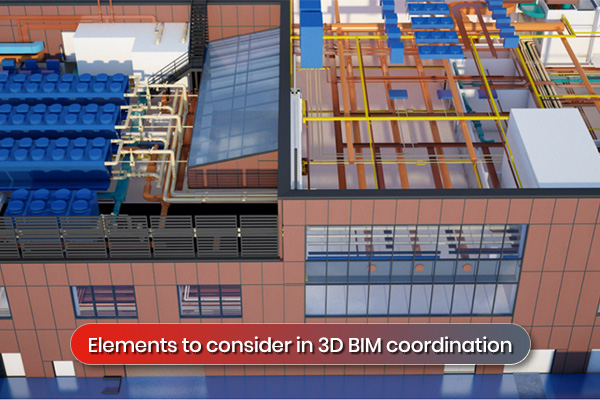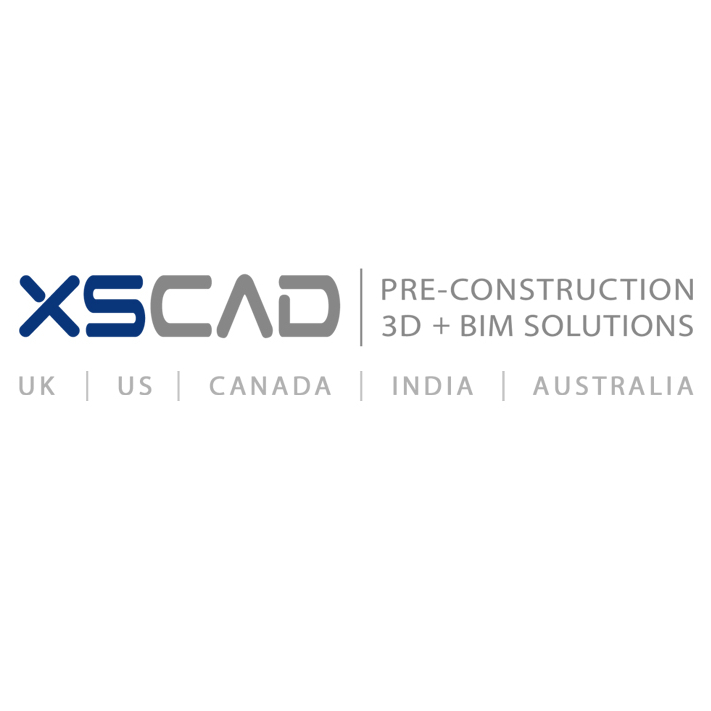Elements to consider in 3D BIM coordination
Why is 3D BIM coordination so crucial to building design?

Why is 3D BIM coordination so crucial to building design?
There are several elements to consider in 3D BIM coordination, and one of the first places to start the process is with a 3D coordinated model. Integrating architectural, structural and MEP trades together into a coordinated 3D model is part of the 3D BIM (building information modelling) coordination process. The BIM process is an effective 3D modelling tool that helps generate precise, accurate 3D coordinated models during the design development of a construction project. With a fully coordinated BIM model, users can see just how the architectural, MEP and structural systems have been coordinated in a 3D environment, and making changes becomes easy.
The process of 3D BIM coordination involves recording, using and reviewing detailed data about a building’s physical functions. The information can also be used to prepare task schedules in 4D, calculate project costs and material take-offs and optimise the sustainability of the overall business design. One way of looking at BIM coordination is to think of it as being a grouping together of 3 distinct functions, namely:
- Actual physical construction (building)
- Coordination of detailed data (information)
- Coordination of an accurate 3D model (modelling)
or BIM.

What is interesting about BIM coordination is that it involves much more than just modelling. It includes data and construction management responsibilities and improves efficiency in terms of saving costs and time and enables more informed decision-making.
A useful function of 3D BIM coordinated models is that they are used to perform clash-detection processes. A 3D BIM coordinated model can help find any clashes, interferences or shortcomings between architectural, structural and MEP systems. One of the most popular software used for this process is Revit, which has advanced features to help merge the different disciplines of the model effectively, helping architects, structural engineers and MEP engineers.
Models can also be studied to determine complex space allocation and how the different MEP trades can fit into the available space. Each of the building’s deliverables involving data-related tasks can be easily and clearly identified, tracked and coordinated at any point or stage of the project’s life cycle. Building risers, plant rooms, prefabricated corridors and ceiling modules can also be coordinated using quality checks in the process of BIM coordination.
Management tasks, such as common data environment (CDE) information management processes, are performed to support data exchange and help both model and data integration and coordination. Also included as part of the 3D BIM Coordination process are constructability reviews, clash detection reports, virtual/personal coordination meetings with consultants, construction/project managers, sub-contractors, architects and engineers.
There are several benefits to be gained from using 3D BIM coordination, such as:
- Reduced errors by the construction team and design team
- Streamlined workflows in accordance with global standards
- Reduction of construction material waste
- Savings on total costs and project time
- Improved technology and innovative ways to maximise project value
A significant part of 3D BIM coordination involves BIM Services, specifically MEP BIM, architectural BIM and structural BIM processes. These BIM services combine data from individual architectural, structural and MEP drawings, using Revit and Navisworks, to help generate intelligent BIM models that feature the following functions and products:
- Coordination
- Fabrication
- Optimisation
- Installation
- MEP engineering
- MEP BIM coordination
- MEP shop drawings
- MEP 3D modelling
- Mechanical room modelling
- Builders work drawings
- As-built drafting
- Piping spool drawings
- MEP quantity take-offs
Since the MEP systems of any building is crucial, it’s critical to be aware of some of the detailed MEP BIM modelling and drafting services available. They include:
- Mechanical equipment modelling
- Diffuser and grill modelling
- Electrical lighting fixture drafting and modelling
- Layout modelling
- Plumbing layout modelling
- Sanitary fixture Revit modelling
- Walk-throughs of MEP/BIM models
- Revit MEP Families Parametric modelling
Common Elements to Consider
The classification of 3D BIM coordination can be as follows:
MEP BIM
Electrical Systems
- Electrical site plans
- Electrical one-line diagrams (riser diagrams)
- Electrical schematics
- Solar panel detailing
- Electrical, power and lighting plans
Plumbing Systems
- Drafting services for domestic water plumbing
- Plumbing and drainage drafting services
- Location and coordination of pipe sleeve requirements
- Isometrics, riser diagrams, details, schematics and schedules
- Sleeve/Penetration Drawings
HVAC (Heating, Ventilation and Air Conditioning) Systems
- Equipment schedules
- Compressed air and medical gas system plan drawings
- Demolition and existing plan drawings
- Equipment piping sizing and design layout plan drawings
- HVAC system drafting
- Details, schematics, schedules, legends and control diagrams
- As-built drawings, equipment specifications, coordination drawings, shop drawings and addendums
- Mechanical equipment layouts, submittals and elevation drawings
Heating Systems
- Boilers
- Direct vents
- Space heaters
- Indoor coil systems
- Heat pumps
- Wall and floor furnaces
- Forced hot air/water
- Thermostats
- Natural gas heating
- Heat pumps – standard and ground source
Ventilation Systems
- Overhead units
- Ductless split systems
- Sheet metal ducts
- Humidifiers/Dehumidifiers
- Central air systems
- Window/rooftop unit systems
- Air cleaners and filters
- Cooling Systems
- Air conditioners
- Air handlers
Architectural BIM
Using the BIM methodology, architects can develop digital design simulations capable of managing the vast stores of information that is part of an architectural project. Besides the 3D characteristics of models, BIM can incorporate 4D (time) and 5D (costs) associated with a project. Stakeholders can access and manage data intelligently and several processes can be automated, such as programming, conceptual design, detailed design, analysis, documentation, manufacturing, construction logistics, operation, maintenance and renovation/demolition.
Libraries of architectural models are available online, providing elements that can easily be incorporated into a project, saving time. This way, data is loaded, the quality of work can be improved, and the amount of decision-making and modifications made can be reduced, lowering both time and costs.
Importantly, these elements, with unique characteristics, can be parametrically related to other project elements, which means that any changes on one element will effect automatic changes to other elements that are connected to or dependent on the first element. Thus, architects can interact with clients, builders and engineers in a shared process.
Structural BIM
The methodology of structural BIM modelling enables design analysis and review of structural elements in a project to further improve the overall design process. Structural BIM services consist primarily of 3D modelling, detailing and drafting. The analysis of these services results in cost-effective design and improves the safety of the design. Building geometry, location and space data, building properties, building materials and resources are better understood with structural BIM services. Some of the major structural BIM services are the following:
- Structural analysis
- Structural design
- 3D modelling
- Steel structure detailing
- Creation of 3D, 4D and 5D BIM services
- Extraction of structural components
- High-quality construction documents
- Clash detection and risk management
- Intelligent parametric library development
- Precise quantity take-offs and cost estimates
With the help of BIM services, design errors are reduced from the improved coordination and communication of decisions. Thus, the main benefits of BIM services include:
- Better communication
- Faster approvals
- Improved coordination
- Easy modifications of design
- Reduced errors
- Reduced time to create drawings and revisions
- Improved performance analysis, evaluation
- Improved project efficiency
There are many elements to consider in 3D BIM coordination, and there are many ways to utilise and optimise the benefits resulting from 3D BIM coordination. Typically, the processes of 3D BIM coordination require the expertise and experience of several stakeholders, sometimes separated by countries. Many Western construction firms opt to outsources these processes to countries further east, such as India, since they have large groups of technically qualified, experienced, English-speaking personnel who deliver these BIM services accurately, clash-free, on schedule and cost-effectively. Bringing together clash-free MEP, structural and architectural systems after careful consideration of its many elements, high-quality 3D BIM coordination services remain an essential part of modern construction.
Source: https://www.xscad.com
+ Post an article












